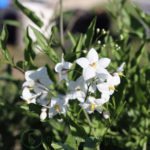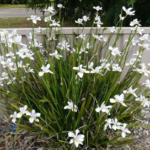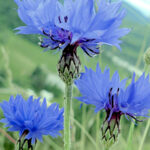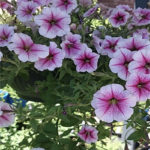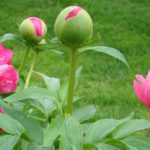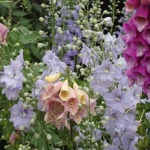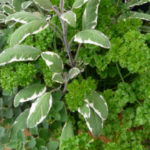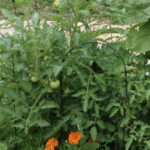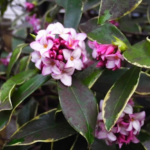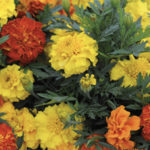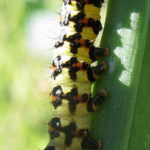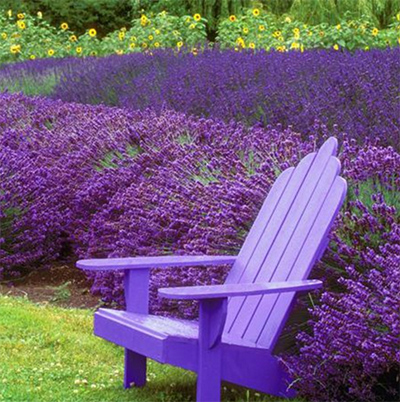
Grow Care of Lavender Plants
How To Grow Lavender And Its Uses
 Lavender grown in gardens is a great way to add splashes of colour, fragrance and is useful to fight pests in your vegetable and flower gardens. Lavender comes from the family of plants known as Lavandula Stoechas. The sweet heavenly scent of the plant, its uses and its returns, should be satisfactory enough to coax you, to grow the much-loved plant. This shrubby perennial plant is most photogenic, as its image is seen as an ad regularly photographed in countless gardening magazines to remind us, gardeners, how lovely this plant can actually look in parks and gardens. Lavender blooms produce a blanket of colour with their flower colours pink white and shades of lilac purple to a lavender blue. The fragrance is used a lot in the perfume industry. Children love to run along and brush the flowers while they are in full bloom, to release the instant strong fragrance. This valuable companion plant can be grown to add an attraction to your garden landscape. It is an ideal choice to be grown as border plants or in pots and containers. The Lavender plant can really improve the look of any rock garden with its contrasting blue green leaves. This plant can withstand drought and heat and can quite easily undergo a long hot summer. They are drought tolerant once established, long flowering rewarding plant for the experienced as well as the novice gardener. Winter blooms extend from June till August inclusive in Australia. It is a tough and colourful plant that attracts butterflies and honey bees to your piece of ground to help in pollination.
Lavender grown in gardens is a great way to add splashes of colour, fragrance and is useful to fight pests in your vegetable and flower gardens. Lavender comes from the family of plants known as Lavandula Stoechas. The sweet heavenly scent of the plant, its uses and its returns, should be satisfactory enough to coax you, to grow the much-loved plant. This shrubby perennial plant is most photogenic, as its image is seen as an ad regularly photographed in countless gardening magazines to remind us, gardeners, how lovely this plant can actually look in parks and gardens. Lavender blooms produce a blanket of colour with their flower colours pink white and shades of lilac purple to a lavender blue. The fragrance is used a lot in the perfume industry. Children love to run along and brush the flowers while they are in full bloom, to release the instant strong fragrance. This valuable companion plant can be grown to add an attraction to your garden landscape. It is an ideal choice to be grown as border plants or in pots and containers. The Lavender plant can really improve the look of any rock garden with its contrasting blue green leaves. This plant can withstand drought and heat and can quite easily undergo a long hot summer. They are drought tolerant once established, long flowering rewarding plant for the experienced as well as the novice gardener. Winter blooms extend from June till August inclusive in Australia. It is a tough and colourful plant that attracts butterflies and honey bees to your piece of ground to help in pollination.
How to Grow Lavender?
Lavender is very easy to grow and produces great quantities of blooms per plant on upright stems. You need not be an expert in horticulture to grow, care and plant the lavender herb. As Lavender is a Mediterranean herb they are also members of the mint family. It will withstand drought and hot dry conditions but doesn’t like heat and humid conditions together; too much humidity can cause fungal diseases; this is when rotting of the plant sets in. The following are the tips to, how to plant and grow lavenders.
- Plant lavenders in a sunny spot, where full sun falls on the soil for at least 8 hours a day or else the plant will grow to constantly chase the light and will always look miserable. Plant in a well dug spot at the same ground level as the plant was in its untouched state in the pot. Deep waterings are needed during continued dry periods. Fertilise during the early growing season.
- In addition to its beauty, flowers heads and stalks should be cut and gathered at the earliest when the flowers are one third opened.
- Spring is the prime time to grow and propagate pot grown plants and seeds. Soft wood tip cuttings can be propagated at a fraction of the cost price.
- Buy a variety to suit your climate. The soil must be one that drains water quickly. Lavenders will not grow continually in non-stop damp soil. It has to be aerated, light and fluffy so that lavender grows well.
- Planting the lavenders in a raised bed or alongside a wall or on top of a slope will help in improving drainage.
- Before planting test the soil first with a do it yourself kit, then apply fertiliser based on the soil test. The lavender prefers to grow in slightly alkaline soil and an ideal pH level of the soil should be between 6.7 and 7.3. The right PH is crucial for a healthy lavender plant. Soil PH is important with the wrong PH the plant cannot take up and use the right nutrients.
- Adding organic compost manure to the soil before planting the Lavenders is very good and will support the plant to grow well. Dig a hole in the soil that can hold the roots of the plant. If you are planting in a pot or container, choose one that will be able to hold the roots. There must be at least an inch left on the sides
- Before planting first Prune the shrub lightly making clean straight cuts before planting. Remove from the nursery pot; do not tease the roots and shake off the excess soil, grasp on to bottom of its mass of roots to transfer and position the plant in the new location. Water the soil after planting.
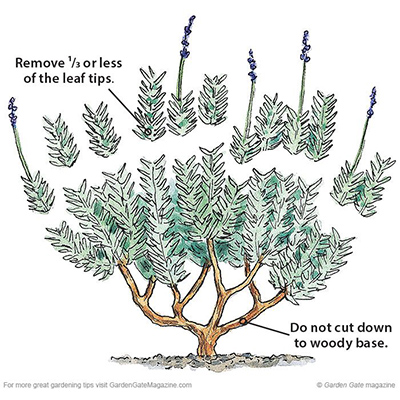 Have you seen lavenders in bloom planted in clipped hedge lines, entryways, along fences or as feature plants and not admired them. The trick to a nice neat bush is they should be trimmed lightly and kept at a height a little higher than the old wood this makes them long lasting plants.
Have you seen lavenders in bloom planted in clipped hedge lines, entryways, along fences or as feature plants and not admired them. The trick to a nice neat bush is they should be trimmed lightly and kept at a height a little higher than the old wood this makes them long lasting plants.
Care for Lavender
- Fertilising the soil once in a year is more than kind. Use only organic compost and blood and bone meal and add it to the soil during early spring.
- Ensure that you water the plants sparingly. Never allow the soil to be too damp.
- Remove the weeds that grow around the lavender base. Use mulch to prevent weeds from growing.
- Prune the lavender plant once every year or when it needs it and the best time to do this is at least during spring.
Uses of Lavender
The main use of lavender flowers is to make scents. The lavender oil offers plenty of health benefits and it is a remedy for helping you to sleep, assist with acne, headaches, anxiety and stress, eczema, menstrual cramps, shingles, sinusitis, muscle pains, giddy spells, and sunburn. The lavender oil offers plenty of medicinal properties. It is used as an antidepressant, antiseptic, expectorant, analgesic, nervine
Dried lavender flowers repel moths, flies and mosquitoes. A popular non toxic way to keep moths out of clothes draws, cupboards and wardrobes is using lavender scented paper liners or scented sachets and lavender bags. It is important to know that lavender should be used in moderation to be safe as high doses of lavender essential oils can be toxic to the liver and kidneys if they are misused.



